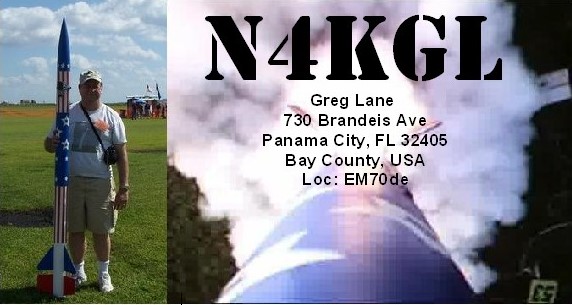 |
| N4KGL pulling the gear with a bike trailer. |
I chose to go with the Icom 7100 as our HF rig. The antenna was the SOTA Beams Band Hopper link dipole supported in the center by the SOTABeams Tactical 7000 telescoping pole. I brought an angle iron stake with a small hammer to pound the stake in the ground. As you can imagine this is not backpack gear. I loaded the rig in a toolbox that fits on my bike trailer. I also put a 40 amp-hour Bioenno LiFePO4 battery in the toolbox. I could have gone with the Elecraft KX2 in the backpack but nevertheless, I brought the big guns. In addition, I packed a Kenwood D710 into the toolbox for VHF. It will do packet comms with its built-in TNC. It is also a full-duplex radio for the FM satellites. I brought a SOTAbeams Travel mast and a rollup J Pole for the VHF antenna.
Local contacts are valid for RaDAR. We made a lot of those of VHF and HF. It is nice to involve my nearby ham friends in the RaDAR experience.
We rode our bikes to the first stop at EM70BG22 and setup. The four-hour clock started at 10 am. I manned the radio and Dennis did the logging. We worked W4IMH, W4NNO, and N4ROJ on two-meter FM simplex. Frank W4IMH was about 40 miles away in Fountain, Florida. To finish the five we worked two Missouri QSO Parrty stations on 40 meter SSB.
 |
| N4KGL at one of the spots |
At the second stop at EM70BG26, we worked my RaDAR friend John VA3KOT in Southern Ontario on 20 meters CW. The next three were QSO Party stations on 20 meters SSB and the last contact was Mark KD4IMA on two meters simplex.
At the third stop at EM70BG19, we tried the Noon pass of the AO-92 and AO-91 FM Satellites. The rollup J pole did a fair job on receiving. I heard myself of the downlink at times. However, with the congestion on the satellites, we had no luck. We then worked Bob WB4BLX and Rick NZ2I on two-meter simplex and also on 40 meters CW. The last contact was Nebraska also on 40 meters CW.
 |
| WA6QKN with a mask |
 |
| One of our transitions on bikes |
Our bike transitions of two kilometers took about ten minutes. I estimate our setup and teardown were about 15 minutes each. With the support of local hams, it did take long to get the five contacts. We got in four stops in four hours. The toolbox packed with radios and battery is my go box for emergencies. Two-meter simplex, as well as HF, worked well for local contacts. There were friends around the country looking for us but missed us. Spotting ourselves proves difficult.
Chris VA3ECO has taken up RaDAR and was out for three hours and did two locations. There is still snow on the ground up there in Ontario, Eddie ZS6BNE had success on the satellites in South Africa. See his blog.
With the Corona situation giving us cabin fever, it was enjoyable to get a dose of radio and exercise outdoors doing the RaDAR Challenge.
73
Dennis and Greg
